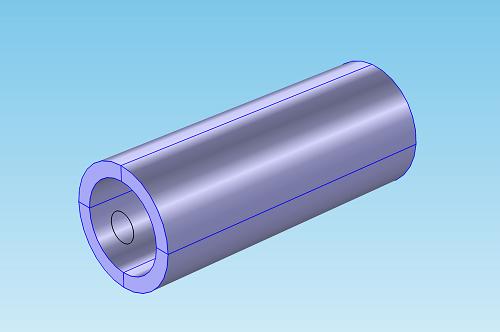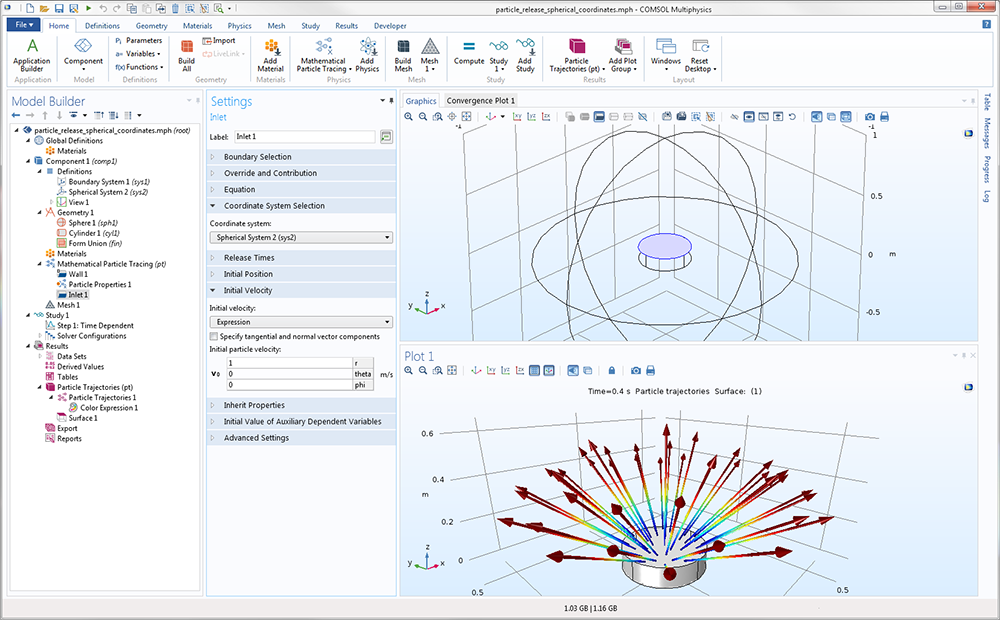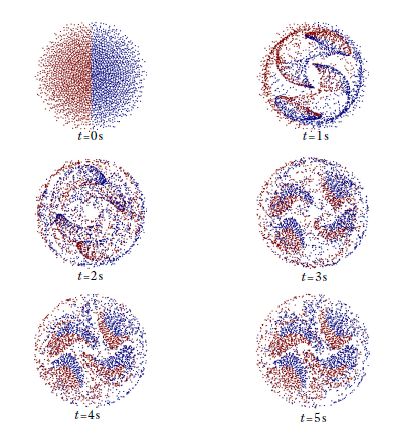

The higher the background pressure, the more important the collisional forces.

The electric force does work on these particles. Particles with negative charge move in the opposite direction to the electric field, and particles with positive charge move in the same direction as the electric field. The electric force, which arises either due to a gradient in the electric potential or due to a time-varying magnetic vector potential.You can conveniently visualize the velocity and energy distributions of the particles, using 1D or 2D histograms.Ĭharged Particles in Electric and Magnetic FieldsĬharged particles, such as electrons, individual ions, or small ion clusters, are affected by three primary forces in electric and magnetic fields: The particle trajectory data itself can be evaluated and written to the Results table or exported to a file. It is also possible to perform operations on the particles to compute and plot the maximum, minimum, average, or integral of some quantity over all the particles. The group behavior of the particles can be projected onto a lower dimension and visualized using Poincaré maps or phase portraits. In cases where the trajectory of many particles are simulated, it is possible to filter out specific particle trajectories according to a logical expression. The particle trajectories can be colored with arbitrary expressions that can depend on the particles, the fields, or any combination of the two. Animations can easily be created and viewed directly in the graphical user interface (GUI) or exported to file. Particle trajectories can be represented by points, comet tails, arrows, lines, tubes, or ribbons. Powerful processing tools allow for sophisticated visualization of the computed particle trajectories. On the longer time scale, these oscillating trajectories precess around Earth from east to west due to asymmetries in the magnetic force. At the intermediate time scale, these helical paths alternate between the magnetic north and south poles as the proton approaches latitudes known as mirror points, which are a function of the equatorial pitch angle. On the shortest time scale, protons follow helical paths around Earth's magnetic field lines. Three types of oscillatory motion can be observed on three different time scales. Trajectories of protons in Earth's magnetic field.

It is also possible to model the two-way interaction between the particles and the fields (particle-field interaction), as well as the interaction of particles between each other (particle-particle interaction).

You can then add arbitrary forces as defined by a suitable expression. A wide range of predefined forces is available to describe specifically how the particles interact with the fields. Particles can be released on boundaries and domains uniformly, according to the underlying mesh, as defined by a grid or according to an arbitrary expression. Additional dependent variables can be added to the model which allows you to compute quantities like particle mass, temperature, or spin. Particles can also stick to the wall according to an arbitrary expression or a sticking probability. The number of secondary particles and their velocity distribution function can be functions of the primary particle velocity and the wall geometry. Secondary particles released when an incoming particle strikes a wall can be included. User-defined wall conditions may also be specified, where the post collision particle velocity is typically a function of the incoming particle velocity and the wall normal vector. Boundary conditions can be imposed on the particles on the walls of the geometry to allow particles to freeze, stick, bounce, disappear, or reflect diffusely. The movement is governed by either the Newtonian, Lagrangian, or Hamiltonian formulations from classical mechanics. You can seamlessly combine any application-specific module with the Particle Tracing Module for computing the fields that drive particle motion. The Particle Tracing Module extends the functionality of the COMSOL environment for computing the trajectory of particles in a fluid or electromagnetic field, including particle-particle, fluid-particle, and particle-field interactions. Extend the Functionality of the COMSOL Environment with Particle Tracing


 0 kommentar(er)
0 kommentar(er)
